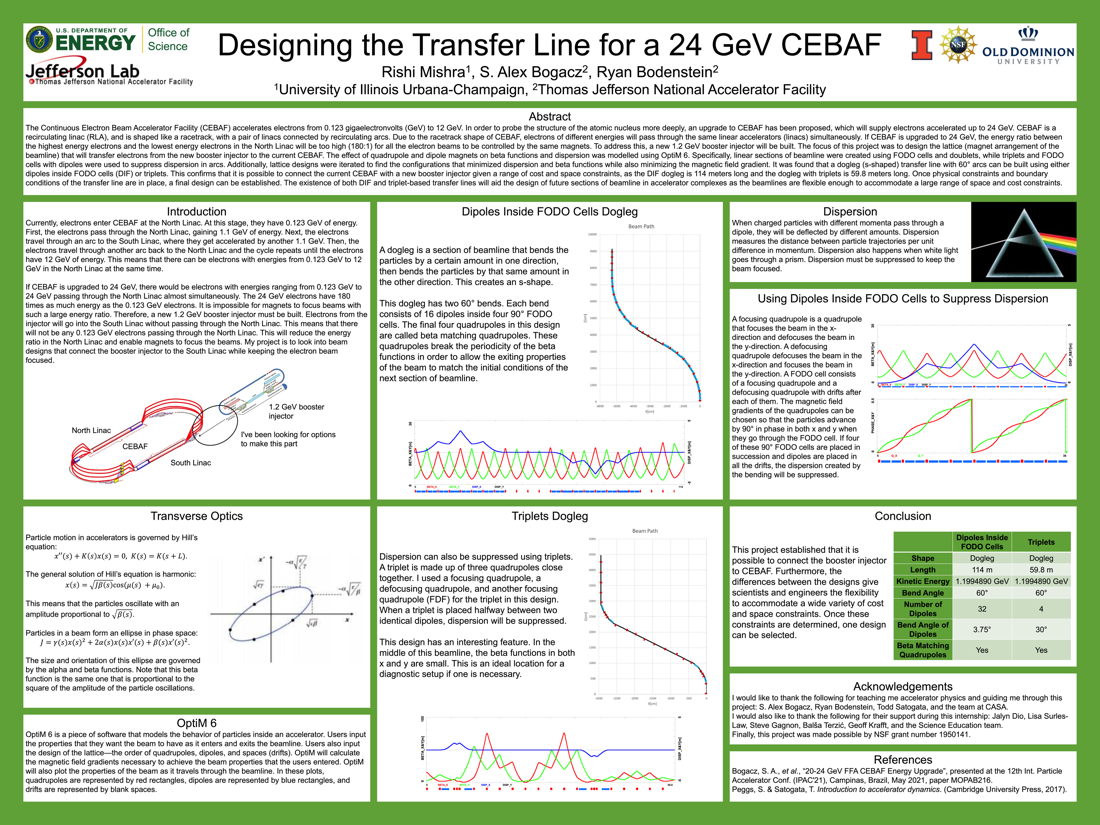Undergraduate Research at Jefferson Lab
Designing the Transfer Line for a 24 GeV CEBAF
Student: Rishi Mishra
School: University of Illinois at Urbana Champaign
Mentored By: Dr. Alex Bogacz and Dr. Ryan Bodenstein
The Continuous Electron Beam Accelerator Facility (CEBAF) accelerates electrons from 0.123 gigaelectronvolts (GeV) to 12 GeV. In order to probe the structure of the atomic nucleus more deeply, an upgrade to CEBAF has been proposed, which will supply electrons accelerated up to 24 GeV. Due to the racetrack shape of CEBAF, electrons of different energies will pass through the same linear accelerators (linacs) simultaneously. If CEBAF is upgraded to 24 GeV, the energy ratio between the highest energy electrons and the lowest energy electrons in the linac will be too high (180:1) for all of the electron beams to be controlled by the magnets. To address this, a new 1.2 GeV injector ring will be built. The focus of this project was to design the lattice (magnet arrangement of the beamline) that will transfer electrons from the new injector ring to the current CEBAF. The effect of quadrupole and dipole magnets on beta functions and dispersion was modelled using OptiM 6. Specifically, linear sections of beamline were created using FODO cells and doublets, while triplets and FODO cells with dipoles were used to suppress dispersion in arcs. Additionally, lattice designs were iterated to find the configurations that minimized dispersion and beta functions while also minimizing the magnetic field gradient. It was found that a dogleg (s-shaped) transfer line with 60° arcs can be built using either dipoles inside FODO cells (DIF) or triplets. This confirms that it is possible to connect the current CEBAF with a new injector given a range of cost and space constraints, as the DIF beamline is 114 meters long and the beamline with triplets is 59.8 meters long. Once physical constraints and boundary conditions of the transfer line are in place, a final design can be established. The existence of both DIF and triplet-based transfer lines will aid the design of future sections of beamline in accelerator complexes as the beamlines are flexible enough to accommodate a large range of space and cost constraints.
[Watch the presentation on YouTube]

Citation and linking information
For questions about this page, please contact Education Web Administrator.
